Ice storms! Some trees are better at handling ice than others. Here's a look at how the big ice storm affected the Sequoia and Tamarack trees here at Haphazard Homestead.
Here's the first post on the Great Willamette Valley Ice Storm of 2016. I'll be showing how the ice affected other trees in future photosets, too, including River Birch, Douglas-fir, Eastern White Pine, and more.
Tamarack
Tamaracks and Larch trees are some of the few conifers that lose their needles in the fall. The lack of needles sure helped my tamarack weather the ice storm! I'm guessing that the weight of the ice was more than the weight of the needles in the summertime. But the branches still seemed to hold the weight just fine.
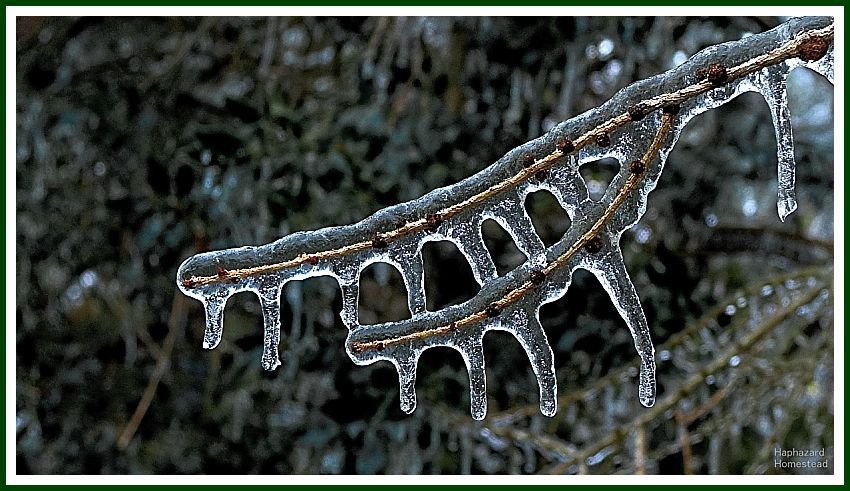
When the needles turn yellow and fall, it can surprise people. A neighbor taking care of my place while I was traveling one autumn, thought he killed my tree when it lost its needles. He was relieved only the next spring, when the tree put on new growth.
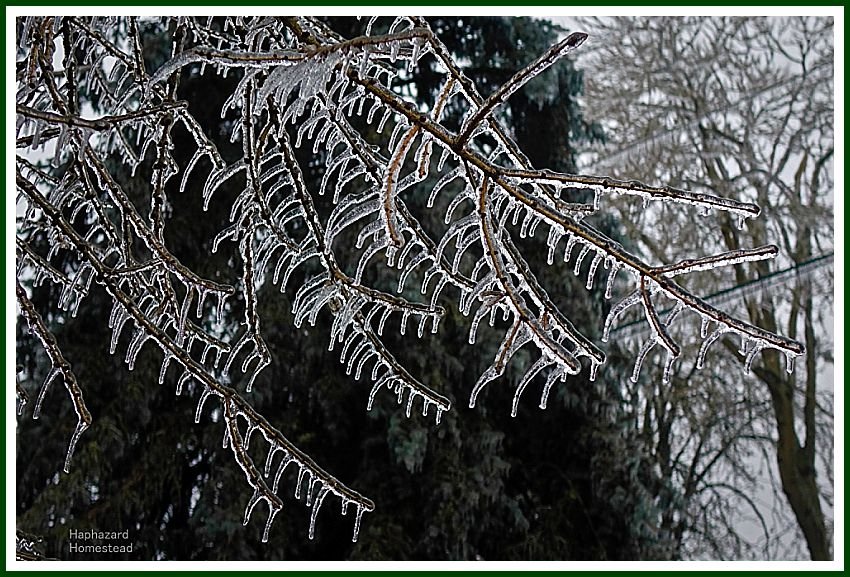
Until this fall, I assumed this tree was a Western Larch (Larix occidentalis) because they are native in Oregon. In fact, the Western Larch is the tree shown on our Oregon automobile license plates. But this year, my tree had cones for the first time. They were small ones, so identification is easy now. Turns out, it's an Eastern Larch, or Tamarack (Larix laricina). I guess I will have to find a Western Larch and plant it, too!
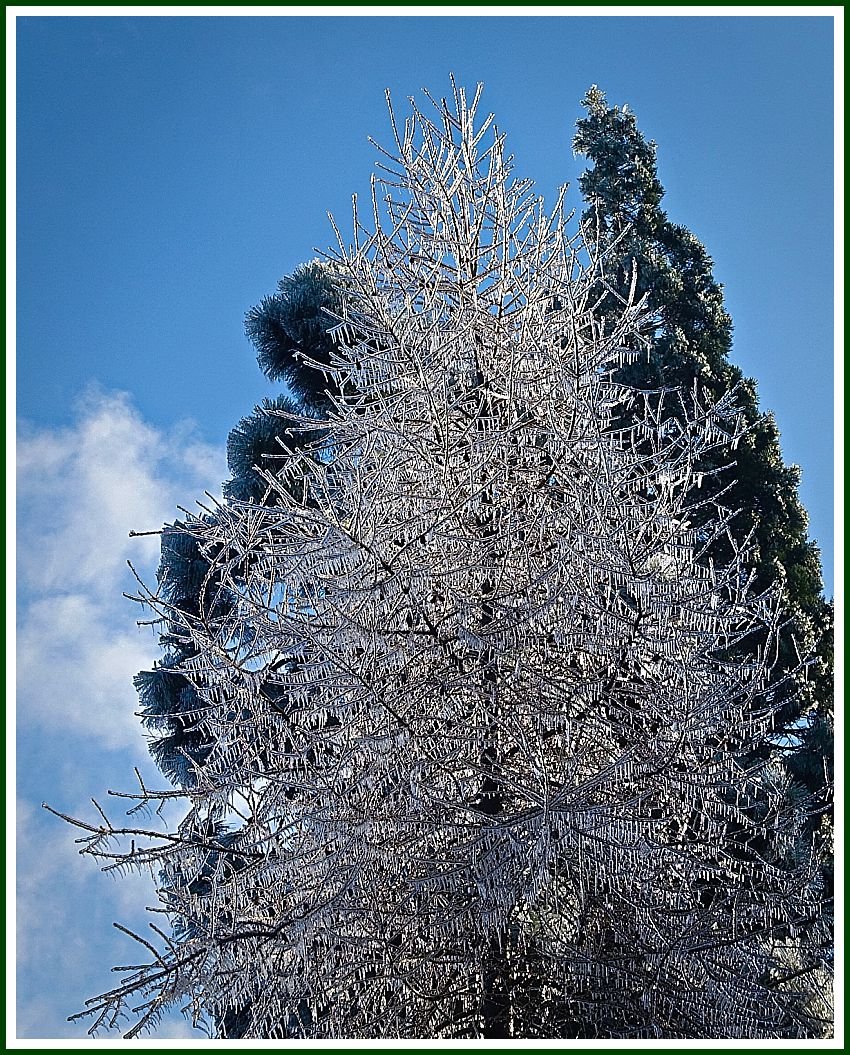
Sequoia
I'm so lucky to have a Giant Sequoia (Sequoiadendron giganteum) in my yard. These trees naturally occur in only a small region of California's Sierra Nevada Mountains. But they do well as landscape trees here in the Pacific Northwest.
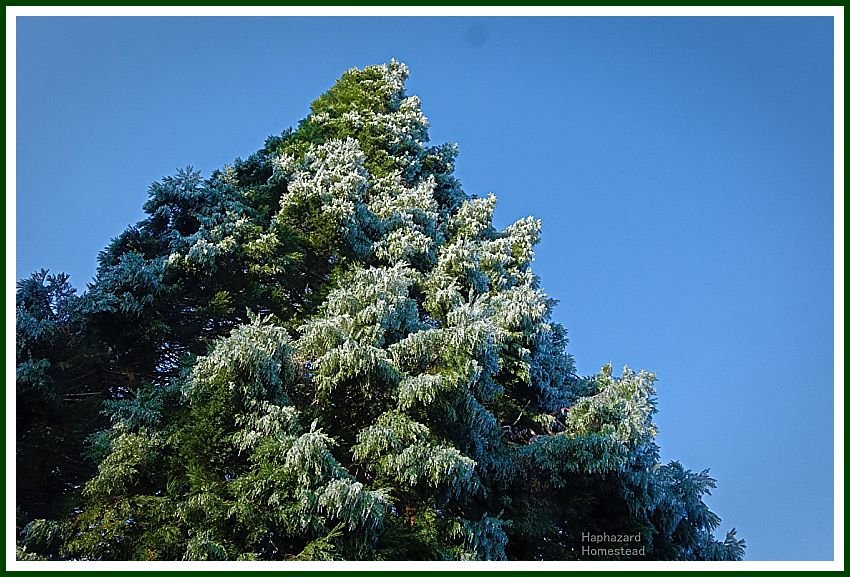
My sequoia tree handled the storm really well. The distribution of ice was uneven, with only the outer branches having much ice at all. It seems like the branches shed water really fast, too. So fast the rain couldn't freeze on the needles. It's often completely dry under this sequoia during rainstorms.
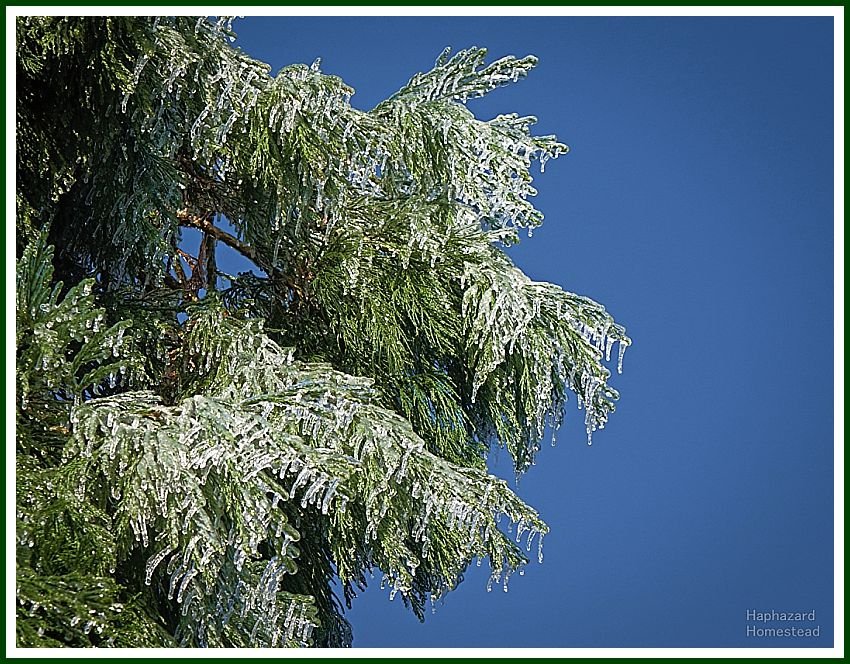
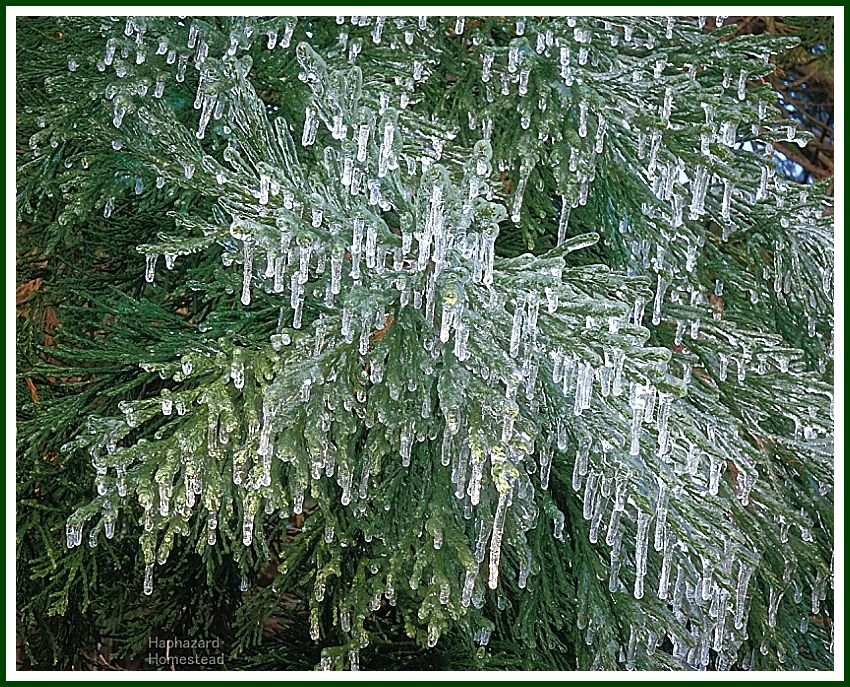
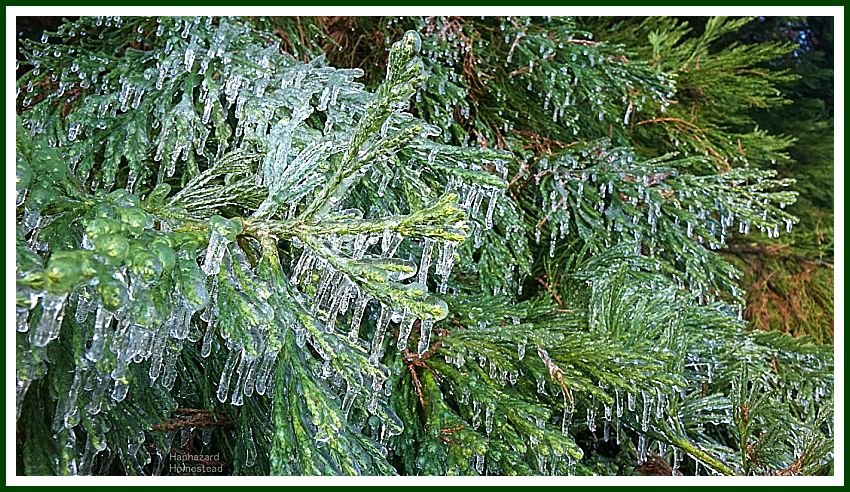
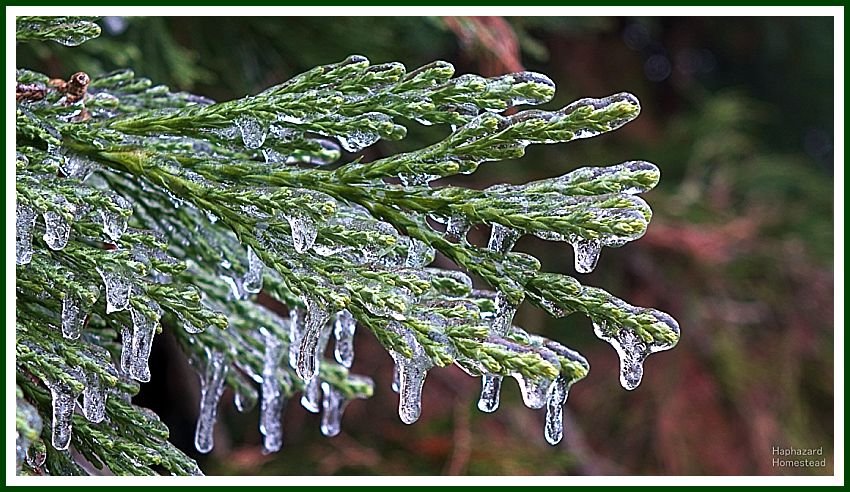
Have you seen trees affected by an ice storm? Have you had trees in your yard affected by ice?
Here's the first post on the Great Willamette Valley Ice Storm of 2016. Follow me to see more ice storm photosets, including the effect on other kinds of trees and plants, and more!
Haphazard Homestead
*** foraging, gardening, nature, simple living close to the land ***
All content is 100% Haphazard Homestead - photos and all!
I participate in Operation Translation. All my posts are available for translation under the rules listed on the linked post from @papa-pepper. Logo provided by @oepc85. Post goes 100% to Steem Power! Logo provided by @merej99

*** foraging, gardening, nature, simple living close to the land ***

